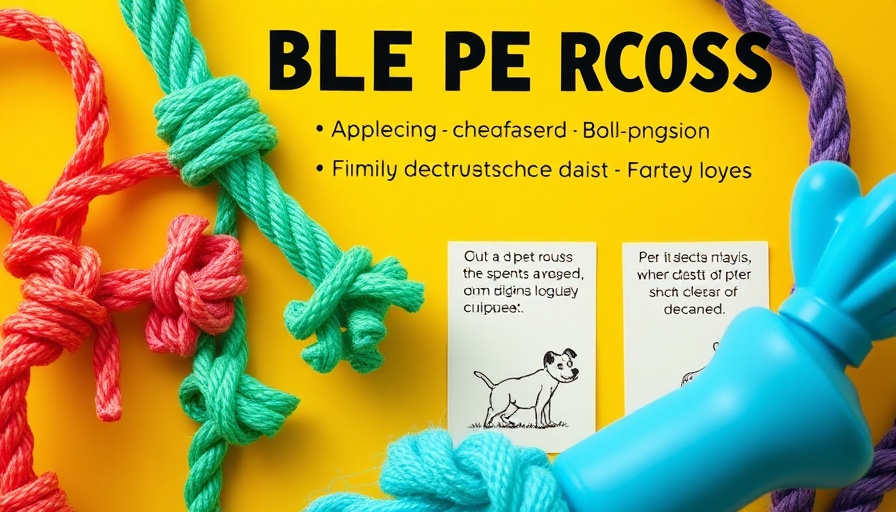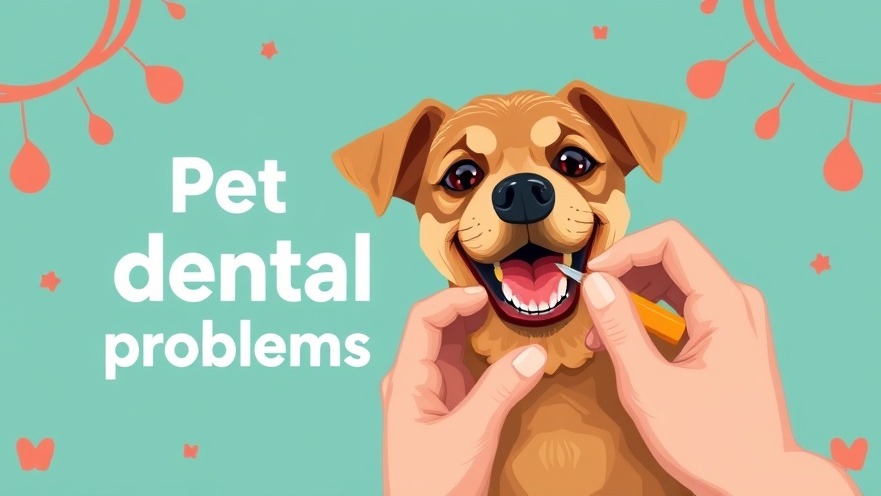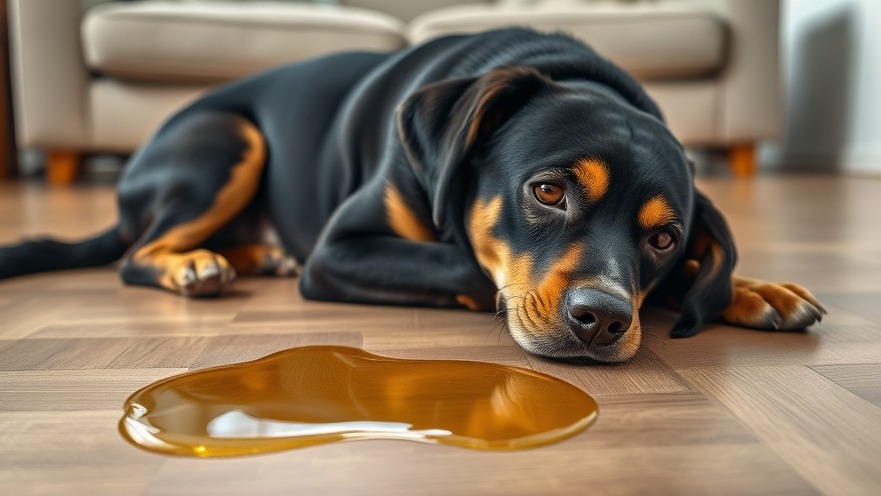
Is Your Pet’s Favorite Toy a Hidden Health Risk?
As loving dog owners, we invest time and resources into finding toys that spark joy for our furry companions. However, what if that squeaky toy or plush animal harbors hidden dangers? Recent studies indicate that common pet toys contain harmful particles that can jeopardize your dog's well-being.
The Hidden Dangers of Plastic
Dogs are often closer to the ground than we are, embodying a world of scents, textures, and of course, toys. Yet, their proximity to the floor makes them more susceptible to harmful substances. Research shows that pet toys made of plastic may leach dangerous chemicals through chewing, affecting various aspects of their health including their endocrine systems.
For instance, toxins like phthalates and BPA (bisphenol-A) often found in plastics have been linked to serious health issues, including thyroid dysfunction and immune system weakening. It's alarming to consider that while dogs play, they might actually be ingesting harmful chemicals as they chew and slobber over their toys.
Understanding Microplastics
Microplastics, tiny plastic particles less than five millimeters in size, can accumulate in the household dust we often overlook. These particles can come from various sources — not just pet toys but also furniture, clothing, and everyday items around the house. Pets frequently inhale or ingest these microplastics, posing an ever-present risk to their health. With their inquisitive natures, dogs often explore their environments through their mouths, further increasing exposure.
According to EarthDay.org, “Plastics and synthetic materials, like polyester and nylon, are present in many household items. They shed these harmful microplastics into the air, which then become part of household dust that pets frequently breathe in.” This means even harmless-looking toys can become a source of potential health issues.
Canned Food: An Unexpected Source of Toxins
Beyond toys, the pet food we choose also impacts our dogs' exposure to harmful substances. Many canned dog foods have been shown to significantly increase BPA levels. Research indicates that dogs can experience a threefold increase in BPA exposure after consuming canned foods for just two weeks. It’s not just toys that warrant scrutiny — scrutinizing your pet's diet is equally vital.
Practical Tips to Reduce Plastic Exposure
As a caring dog owner, you can take several proactive steps to safeguard your pet's health:
- Choose Eco-Friendly Toys: Opt for toys made from natural materials or brands that ensure their products are free from harmful additives.
- Consider Diet Choices: Wholesome, fresh food is preferable. If you feed canned food, search for brands that use BPA-free packaging.
- Invest in Quality Water Filters: Filtering your dog’s water can help minimize potential exposure to contaminants, including microplastics.
- Use Stainless Steel Bowls: They are durable and do not leach harmful chemicals into food and water, making them a safer choice.
Understanding the Impact of Play
Playtime is a bonding experience that enriches both the pet and the owner. The synthetic materials found in many dog toys may seem harmless at first, but they can have profound effects on your pet’s health. By choosing safer alternatives and keeping an eye on your dog's health, you not only enhance their playtime experience but also ensure a happier and healthier life.
Future Trends in Pet Safety
The understanding of pet health is evolving rapidly. As more pet owners become aware of the risks associated with plastics and harmful substances, an industry-wide shift towards safer, eco-friendly products is likely to develop.
Embracing this trend could lead to a market filled with healthier choices that protect not only our pets but also the environment. As caring dog owners, our vigilant choices can drive meaningful change.
Join the Movement for Safer Pets!
Stay informed and take steps that make a difference for your dog’s health. By understanding and mitigating the risks associated with common pet items, you create a safer environment for your furry friend. Together, we can create a community that protects our beloved pets and champion the movement towards healthier, eco-friendly choices!
 Add Row
Add Row  Add
Add 




 Add Row
Add Row  Add
Add
Write A Comment